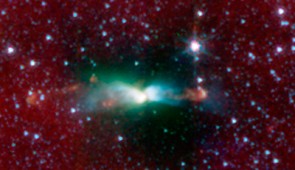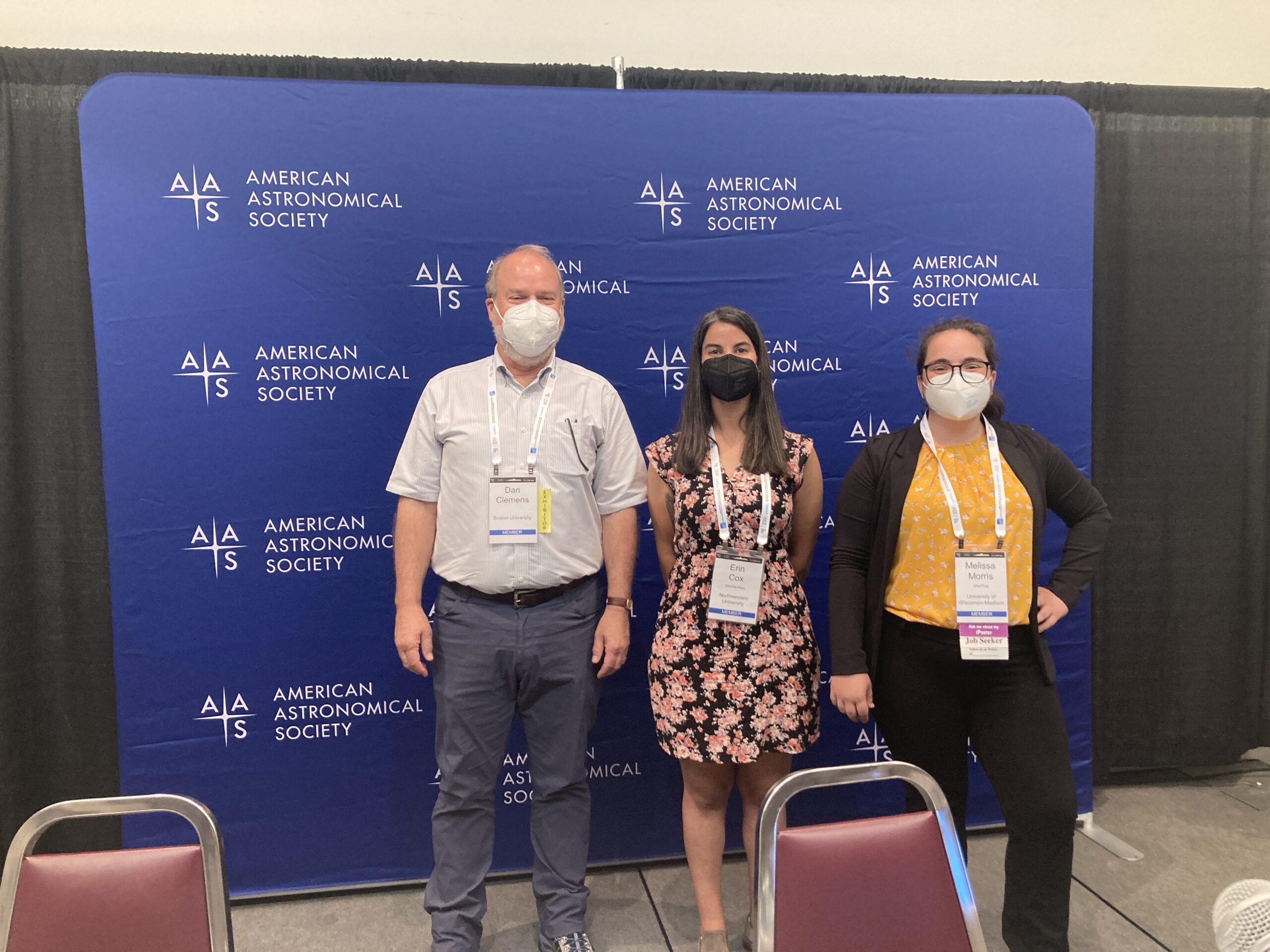Event provides new evidence that traveling stars can form binary systems

Image Credit: NASA/JPL-Caltech/J.Tobin (University of Michigan)
From a zoomed out, distant view, star-forming cloud L483 appears normal. But when a Northwestern University-led team of astrophysicists zoomed in closer and closer, things became weirder and weirder.
As the researchers peered closer into the cloud, they noticed that its magnetic field was curiously twisted. And then — as they examined a newborn star within the cloud — they spotted a hidden star, tucked behind it.
 “It’s the star’s sibling, basically,” said Northwestern’s Erin Cox, who led the new study. “We think these stars formed far apart, and one moved closer to the other to form a binary. When the star traveled closer to its sibling, it shifted the dynamics of the cloud to twist its magnetic field.”
“It’s the star’s sibling, basically,” said Northwestern’s Erin Cox, who led the new study. “We think these stars formed far apart, and one moved closer to the other to form a binary. When the star traveled closer to its sibling, it shifted the dynamics of the cloud to twist its magnetic field.”
The new findings provide insight into binary star formation and how magnetic fields influence the earliest stages of developing stars.
Cox will present this research at the 240th meeting of the American Astronomical Society (AAS) in Pasadena, California. “The Twisted Magnetic Field of L483” will take place on Tuesday, June 14, as a part of a session on “Magnetic Fields and Galaxies.” The Astrophysical Journal also will publish the study next week.
Cox will be available to answer questions about the study during a press conference at AAS, which will be held both in-person and virtually at 2:15 p.m. PDT on Monday, June 13. Members of the press can register for the event here.
 Cox is a postdoctoral associate at Northwestern’s Center for Interdisciplinary Exploration and Research in Astrophysics (CIERA).
Cox is a postdoctoral associate at Northwestern’s Center for Interdisciplinary Exploration and Research in Astrophysics (CIERA).
Continue to the full Northwestern News story.
Learn More
- Learn more about Erin’s work and recently awarded National Science Foundation MPS-Ascend Fellowship
- Learn more about The American Astronomical Society

